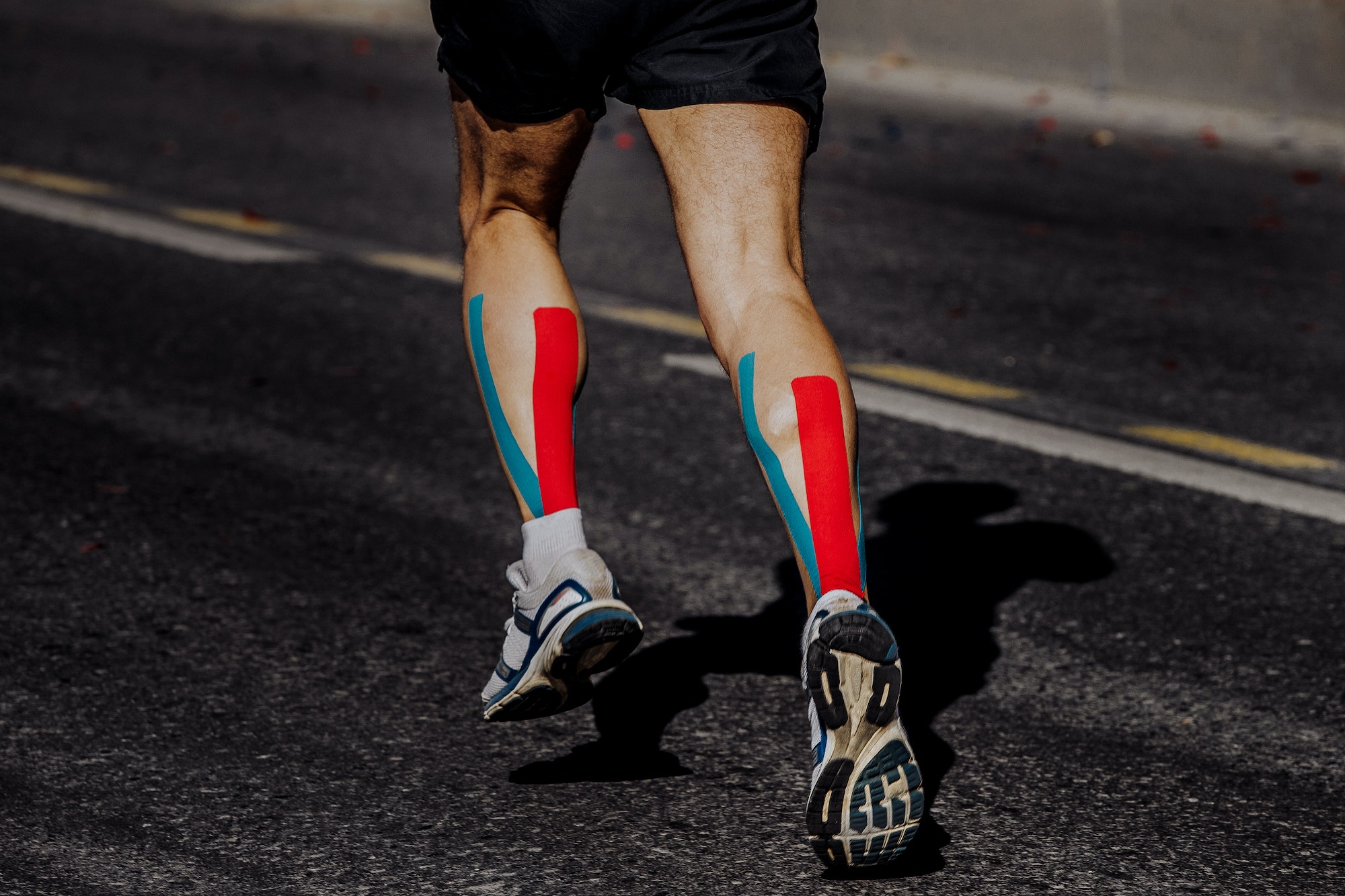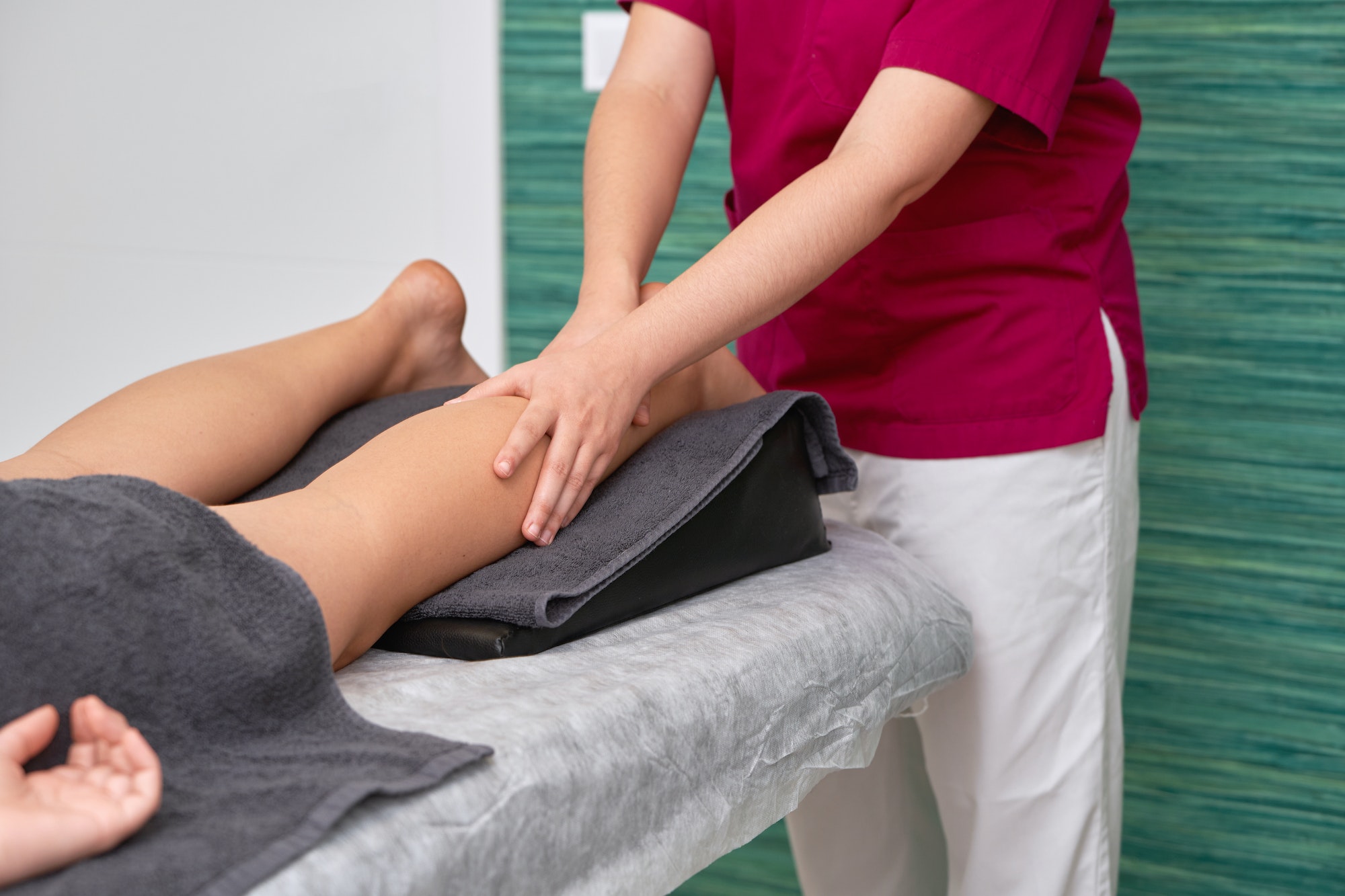A Calf Muscle Tear can occur during physical activity, such as running or jumping, or due to an accident or sudden movement. The muscles in the back of your lower leg, specifically the gastrocnemius and soleus, are situated behind your shin bone. They stretch from the area behind your knee to your heel. In the case of abrupt movements that excessively strain them, these muscles may experience tearing (small micro-tears in the muscle fibres).
Whatever the cause, it’s important to seek medical attention promptly to ensure proper diagnosis and treatment for calf pain and achilles tendon issues.
A calf muscle tear, also known as a pulled or strained calf muscle, occurs when the muscle fibres in the lower leg suffer damage or rupture. This type of injury is common among athletes and individuals who engage in physical activity that puts strain on the calf muscles.
Different types of calf muscle injuries can occur, ranging from mild strains to complete tears. The severity of the injury depends on various factors such as the extent of the tear, location, and underlying health conditions.
 Photo Credit: realsportsphotos | Envato
Photo Credit: realsportsphotos | Envato
The calf muscles are made up of two main muscles, the gastrocnemius and the soleus. The gastrocnemius is the larger of the two muscles and is responsible for pushing the foot downwards and bending the knee. The soleus muscle is located beneath the gastrocnemius and is responsible for stabilising the ankle joint.
Calf muscle tears can occur due to sudden movements or intense vigorous physical exercise . Activities that require quick bursts of speed or involve jumping can put strain on the calf muscles and lead to tears. Other factors that can increase the risk of injury include:
It’s important to recognise the symptoms of a calf muscle tear and seek medical attention promptly to prevent further damage and promote healing.
Calf muscle tears or calf muscle strain are a common injury that can occur in people of all ages and activity levels. While they can happen suddenly due to a traumatic event, such as a fall or accident, repetitive stress or overuse of the muscle cause most calf muscle strain.
 Photo Credit: lakobchuk | Envato
Photo Credit: lakobchuk | Envato
Calf muscle tears usually are a result of activity that places excessive strain on the muscle. This can include activities such as running, jumping, and sprinting, especially when done at high intensity or without a proper warm-up. Even activities as simple as walking on an incline or standing for extended periods can cause calf muscle tears in some individuals.
Dehydration can also contribute to calf muscle tears. When the body is dehydrated, the muscles are more prone to injury and strain. This is especially true if the individual is engaging in activity while dehydrated.
Poor footwear can also lead to calf muscle tears. Shoes that do not properly support the feet or fit the individual’s foot shape can cause added stress on the calf muscles. This can lead to tears, particularly during activities that involve a lot of movement.
Individuals who have previously experienced calf muscle tears or other lower leg injuries are at an increased risk for re-injury. Scar tissue from previous injuries can make the muscle more prone to tearing. It’s important to properly rehabilitate the muscle after an injury to prevent future tears.
If you experience sudden pain in your calf or notice any other symptoms of a pulled calf, it’s important to seek medical attention right away. Proper diagnosis and treatment can help prevent further damage and promote healing.
If you experience sudden pain in your calf, it could be a sign of a pulled or strained calf muscle. Other symptoms of a calf muscle tear may include:
If you are experiencing any of these symptoms, it is important to seek medical attention promptly. A healthcare professional can confirm the diagnosis and determine the appropriate treatment plan.
In some cases, symptoms may not appear immediately after the injury but may develop gradually over time. This is particularly common with tears of the soleus muscle in the lower leg.
It is important to listen to your body and to seek medical attention if you suspect a calf muscle tear. Prompt treatment can help ensure proper healing and a full recovery.
If you suspect a pulled calf muscle, it is important to seek medical attention promptly. A doctor will conduct a physical examination of the affected area and may order imaging tests to determine the extent of the tear.
Ultrasound is commonly used to diagnose pulled calf muscle as it allows doctors to clearly visualise the muscle fibres and identify any tears. Magnetic resonance imaging (MRI) may also be used to confirm the diagnosis and assess the severity of the injury.
During the physical examination, the doctor will assess tenderness and swelling in the affected area and may also test the strength of the calf muscle. They may also ask about the onset of symptoms and any recent physical activity that may have caused the injury.
 Photo Credit: jmartinstock | Envato
Photo Credit: jmartinstock | Envato
If a tear is confirmed, the doctor will determine the grade of the tear, which is based on the extent of muscle damage. A grade 1 tear involves a few torn muscle fibres, while a grade 3 tear is a tear of the muscle. This information will help determine the appropriate treatment plan.
It is important to receive an accurate diagnosis to follow the correct treatment plan. Ignoring a pulled calf muscle can lead to long-term complications and delay the recovery period.
Several treatment options are available for calf muscle pain, depending on the severity of the injury. Rest, ice, compression, and elevation (RICE) are often recommended for minor tears or strains to reduce pain and swelling. Medical treatment may be necessary in more severe cases to ensure proper healing and prevent further damage.
When dealing with a complete rupture of the muscle, surgery may be required; an incision in your calf and reattach the two ends of your muscle with stitches. Physical therapy is often recommended following surgery to help regain strength and mobility in the affected leg.
Compression garments such as calf sleeves or compression socks can also help reduce swelling and promote blood flow to the calf injuries, aiding in the recovery process. It is important to note that the recovery time can vary depending on the extent of the damage , with tears taking longer to heal than minor strains.
If you suspect a calf muscle tear, it is essential to seek medical attention promptly. A proper diagnosis can help determine the extent of the tear and ensure the most effective treatment is chosen. Following through with the recommended treatment plan will help ensure a full and speedy recovery. It is crucial to acknowledge that even after a torn calf muscle recovers, there could be the presence of scar tissue in the muscle.
Injured calf can be painful and debilitating. However, with proper prevention strategies, you can avoid injuring your lower leg muscles and maintain calf health. Here are some practical tips to help you prevent muscle tears:
Remember, if you do experience any sudden pain or discomfort in your calf muscles, stop exercising and seek medical attention. Early diagnosis and treatment can help prevent a minor calf strain from turning into a more serious injury, such as a complete tear.
While it may be technically possible to walk with a strained or torn calf muscle, it is usually extremely painful and difficult for people with a pulled calf. Depending on the severity of the tear, you may need to use crutches or a walking boot. It is advised to seek immediate medical attention to prevent further injury.
The healing time for an injured muscle varies depending on the severity of your injury. Calf muscle heals in a few weeks in cases of minor tears, while more severe tears could require several months of recovery. Surgery may be necessary in some cases, which can extend the healing period.
Symptoms of a torn calf muscle can include a sudden sharp or tearing pain in the calf; difficulty walking or bearing weight on the affected leg; swelling, bruising, and muscle weakness. In severe cases, a pop may be felt or heard at the time of injury. Medical diagnosis is necessary to confirm the gravity of the injury .
A strain usually involves a mild to moderate pull of the muscle or tendon without significant damage, while a tear is a severe rupture or damage to the muscle or tendon. Symptoms of a tear, such as intense pain, significant swelling, and inability to bear weight, are typically more severe than those of a strain. However, it’s often hard to differentiate between the two without a medical examination.